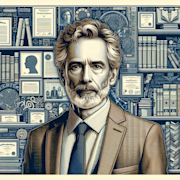Beyond the Jungle: Kipling's The Jungle Book Reimagined

Rudyard Kipling’s The Jungle Book is a timeless classic that has captured the hearts of readers for generations. The tale of Mowgli, a young boy raised by wolves in the jungles of India, has been retold in countless adaptations, from animated films to stage productions. While Kipling’s original work remains a beloved piece of literature, many artists and writers have taken the story in new and exciting directions. In this blog post, we will explore some of these reimaginings of The Jungle Book and how they have pushed the boundaries of Kipling’s iconic tale.
The Evolution of Mowgli
One of the most intriguing aspects of The Jungle Book is the character of Mowgli, a human child living among animals in the wild. In Kipling’s original stories, Mowgli is portrayed as a brave and resourceful young boy who learns the ways of the jungle from his animal companions. However, in more recent adaptations, Mowgli’s character has been given new depth and complexity. For example, in the 2016 live-action film directed by Jon Favreau, Mowgli is depicted as a conflicted individual torn between his human heritage and his animal upbringing. This nuanced portrayal adds a layer of emotional depth to Mowgli’s journey, making him a more relatable and compelling protagonist.
Exploring New Settings
While The Jungle Book is traditionally set in the jungles of India, some reimaginings of the story have taken Mowgli to new and unexpected settings. For instance, the graphic novel series Mowgli: Legend of the Jungle by Reinhard Kleist transports the character to a dystopian future where he must navigate a world torn apart by war and environmental devastation. This unique take on the classic tale offers a fresh perspective on Mowgli’s character and the themes of identity and belonging that are central to the original story.
Reimagining the Animal Characters
In addition to reimagining Mowgli, many adaptations of The Jungle Book have also put a new spin on the animal characters that populate the story. In the 2018 film directed by Andy Serkis, titled Mowgli: Legend of the Jungle, the animals are brought to life through groundbreaking motion-capture technology, giving them a sense of realism and depth that has never been seen before. This innovative approach to portraying the animal characters adds a level of immersion to the story, allowing viewers to truly connect with these creatures and understand their perspectives.
Addressing Themes of Ecology and Conservation
While The Jungle Book is often seen as a tale of adventure and coming-of-age, it also contains important themes of ecology and conservation. Some reimaginings of the story have chosen to focus more explicitly on these themes, using Mowgli’s relationship with the natural world to explore issues such as deforestation, habitat destruction, and the impact of human activity on wildlife. By bringing these issues to the forefront, these adaptations serve as a powerful reminder of the importance of protecting our planet and the creatures that inhabit it.
Conclusion
In conclusion, The Jungle Book continues to be a rich source of inspiration for artists and writers seeking to reimagine this classic tale for a new audience. Whether by exploring new settings, delving into the complexities of Mowgli’s character, or addressing important themes of ecology and conservation, these adaptations have breathed new life into Kipling’s timeless story. By pushing the boundaries of tradition and challenging preconceived notions, these reimaginings have shown that there is still much to be discovered beyond the jungle.

Johnathan Evans
Journalist
More From Classics Authority Books

Book
Revisiting the Renaissance: Boccaccio's Decameron Explored

Book
Understanding the Themes of Freedom and Oppression in Harper Lees To Kill a Mockingbird

Book
The Complexities of Conrad: Lord Jim's Exploration of Guilt and Redemption

Book
Sense and Sensibility by Jane Austen

Book
Aldous Huxley's Brave New World: Dystopia and Technological Anxiety

Book
Maugham's The Razor's Edge: Spiritual Quest in a Post-War World





